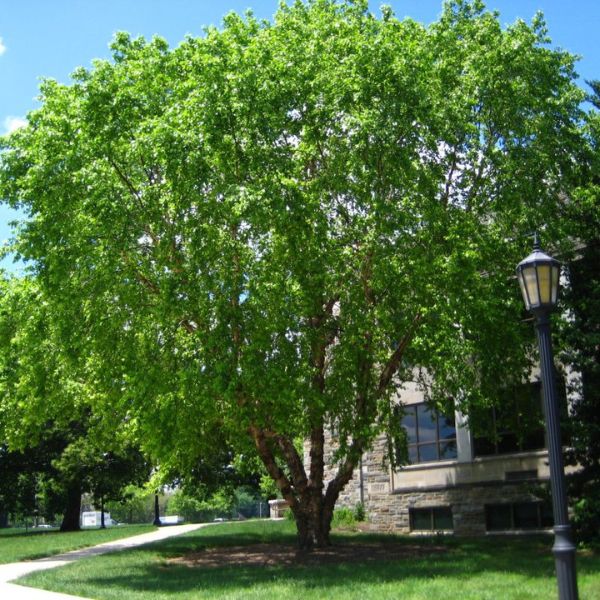
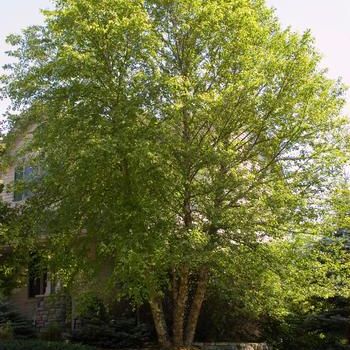
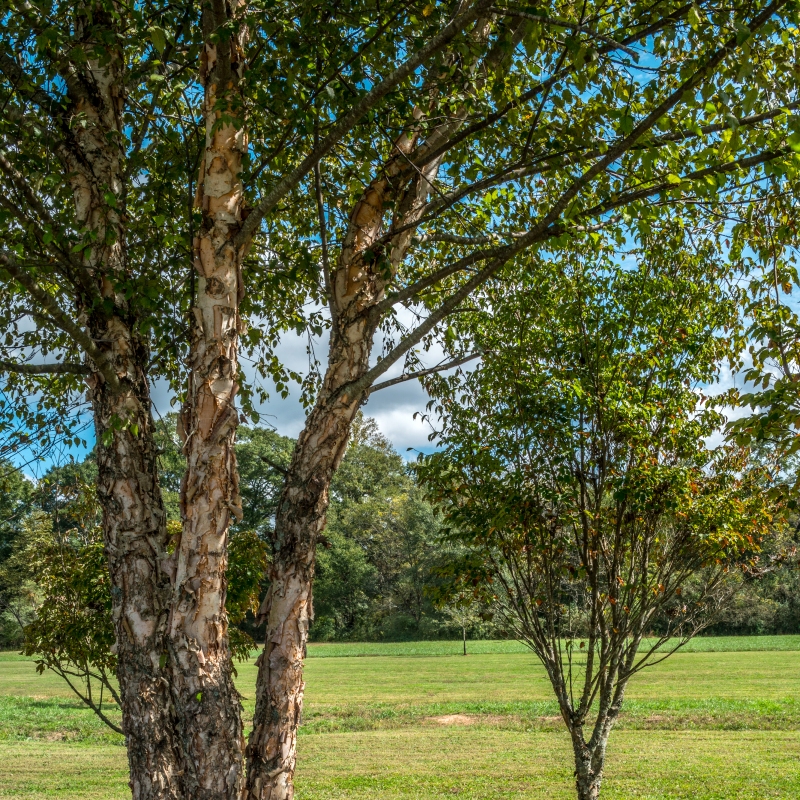
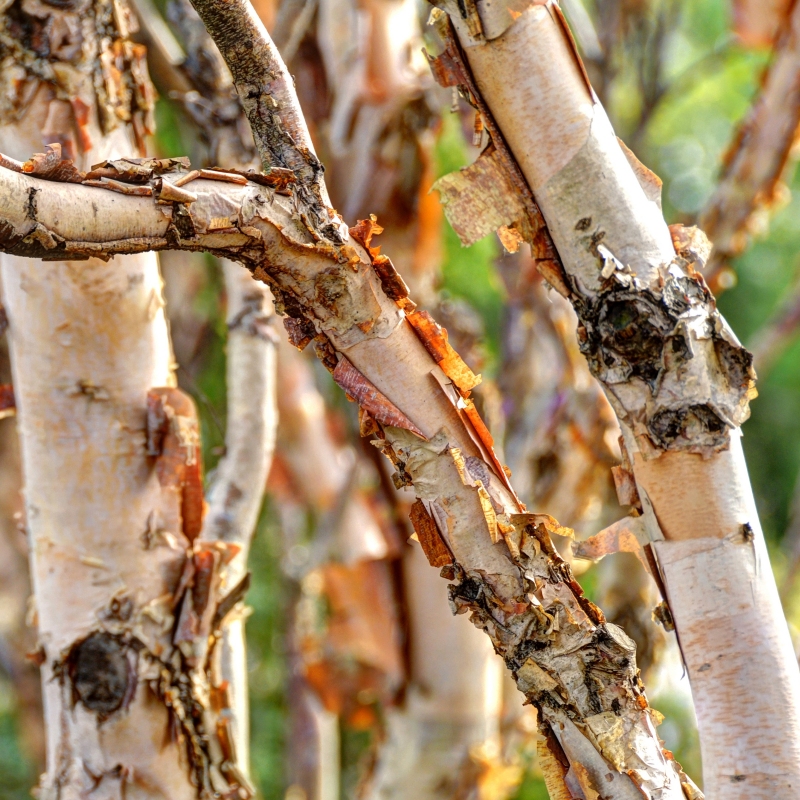
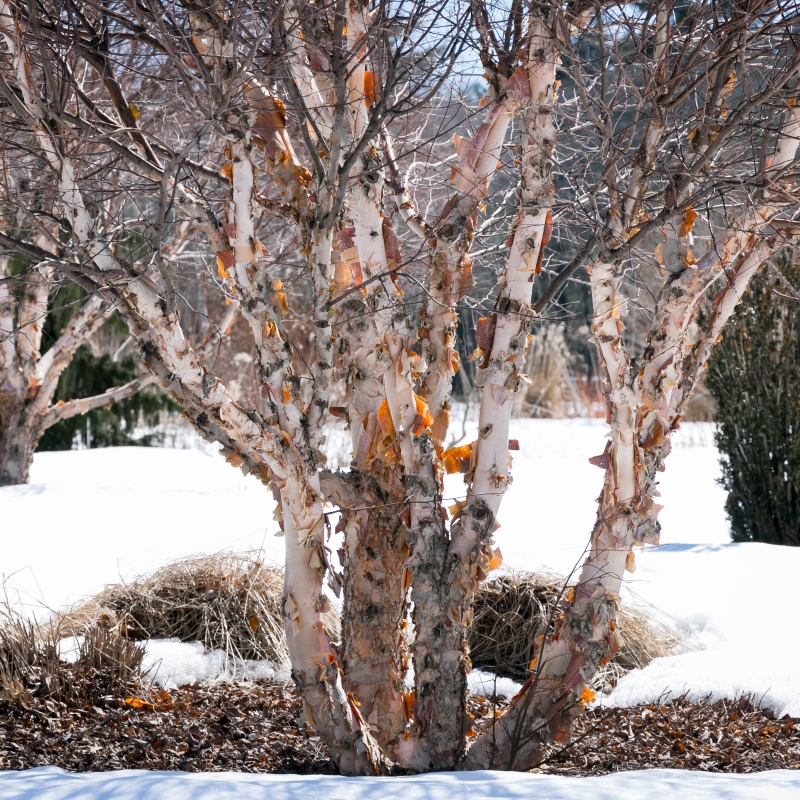
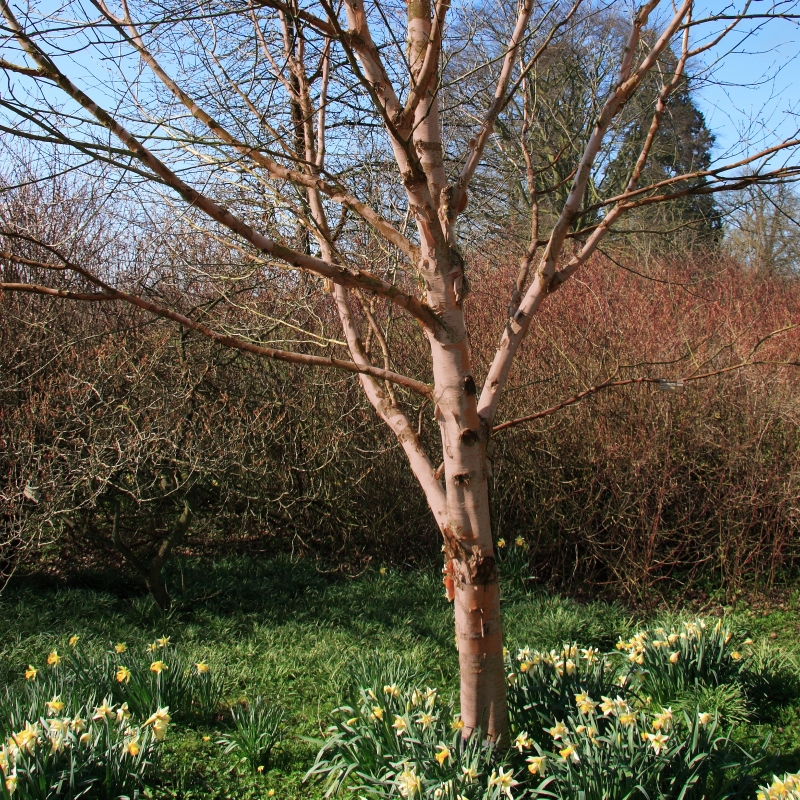
River Birch
Betula nigra
88 reviews
River Birch
Betula nigra
88 reviews
- 3.5 Gallon 4-5 Feet Single Stem
- Trade 3 Gallon
We are sorry, product is currently out of stock due to seasonal availability. Please check the "Related plants available in your area" section below
Not just beautiful - intentionally selected by ShrubHub's 3D landscape design team to fit real-world spaces and maximize yard potential.
Why River Birch?
River Birch (Betula nigra) is a popular tree species native to North America. It is characterized by its attractive bark, which peels off in thin, papery sheets, revealing shades of cinnamon, cream, and salmon-pink. The tree is also known for its tolerance to wet soil conditions, making it a great choice for planting near rivers or in other moist areas. Additionally, River Birch provides important habitat for wildlife, especially birds.
Sunlight
River Birch trees require full sun to partial shade for optimal growth. They can tolerate some shade but thrive in areas with at least 6 hours of direct sunlight per day.
Watering
River Birch trees have moderate watering requirements. They prefer moist soil and need regular watering to establish strong root systems. It is important to ensure that the tree receives enough water, especially during dry periods, to prevent stress and ma
Fertilizing
River Birch trees prefer acidic soil with a pH range of 5.0-6.5. They have moderate nutrient requirements and benefit from an annual application of a balanced slow-release fertilizer applied in early spring.
A Beautiful & Hardy Birch Tree? Try River Birch Trees Today!
Looking for a tree that can add value to your landscape while requiring minimal maintenance? Look no further than the River Birch tree! With its unique features and benefits, this tree is the perfect addition to any property.
The River Birch, Betula Nigra, is a deciduous tree that can grow up to 80 feet tall. Its leaves are dark green and diamond-shaped, and it produces small, brownish-green cones in the summer. What sets the River Birch apart from other trees is its bark, which peels away in layers to reveal a beautiful, cinnamon-colored trunk. This tree is also known for its ability to thrive in wet soil conditions, making it a great choice for properties near bodies of water.
The River Birch tree offers a variety of benefits to homeowners, landscapers, and property managers. Its ability to grow in wet soil conditions makes it an ideal choice for properties near ponds, lakes, or rivers. Additionally, the River Birch is highly resistant to bronze birch borer, which means it requires minimal maintenance. Additionally, individuals wishing to improve the appearance of their property can choose it because of the way its distinctive bark provides visual appeal to any environment.
Your long-term investment in the appeal and worth of your property will be enhanced by the addition of a River Birch tree to your landscaping.
Ready to add a River Birch tree to your landscape? Buy it today and enjoy all its benefits!
With its unique features and benefits, the River Birch tree is the perfect addition to any property.
Plant Information:
| Botanical Name: | Betula nigra |
| USDA Zones: | 3 - 9 |
| Water: | Moderate & Adaptable |
| Exposure: | Full Sun |
| Soil Needs: | Widely Adaptable |
| Mature Height: | 25 - 50 feet |
| Mature Spread: | 25 - 35 feet |








Pollination Info
Pollination Info for River Birch (Betula nigra)
River birch (Betula nigra) is pollinated by the wind. The birch tree is dioecious, meaning it carries both male and female flowers on separate trees. The male flowers are long and yellow-brown, hanging from the catkins. The female flowers are small and greenish-yellow, located at the base of the catkin. The pollen is dispersed by the wind, and when it lands on the female flowers, it travels down the flower tube to fertilize the ovules, which will eventually develop into seeds.
The pollination period for the river birch is in the spring, generally between mid-April and early May, depending on the climate and location. The male flowers typically bloom earlier and shed their pollen first, while the female flowers are receptive to the pollen after several days. Once fertilized, the female flowers develop into small cone-shaped fruits that contain many small seeds, which are dispersed by the wind.
FAQ
FAQ for River Birch (Betula nigra)
1. What is a River Birch?
River Birch (Betula nigra) is a deciduous tree native to the eastern United States. It is known for its distinctive peeling bark that exposes shades of white, pink, gray, and brown. The tree is also commonly referred to as Black Birch or Water Birch.
2. How tall does a River Birch get?
River Birch trees can grow up to 70 feet tall and 50 feet wide at maturity.
3. What are the growing conditions for River Birch?
River Birch trees prefer moist, well-drained soil and full sun to partial shade. They can tolerate wet soil but are also drought-resistant once established. They also prefer acidic soil.
4. When does River Birch bloom?
River Birch trees typically bloom in early spring before the leaves begin to emerge. The tree produces small, brownish male flowers and green female flowers that develop into cone-like fruits.
5. How fast does River Birch grow?
River Birch trees are considered fast-growing and can grow up to 2 feet per year under optimal conditions. However, growth rates can vary depending on environmental factors such as climate and soil conditions.
6. How do you care for a River Birch?
Proper care for a River Birch includes regular watering to maintain soil moisture and fertilization in the spring to promote healthy growth. The tree also benefits from regular pruning to remove damaged or diseased branches and to maintain its shape and size.
7. Is River Birch susceptible to any diseases or pests?
Like many trees, River Birch can be susceptible to diseases and pests. Common issues include borers, leaf spot, cankers, and aphids. Regular monitoring and treatment can help prevent and manage these issues.
8. What are the benefits of planting a River Birch?
Planting a River Birch offers a range of benefits, including: providing shade, improving air quality, reducing soil erosion, and attracting wildlife such as birds and butterflies. The tree's distinctive bark also provides visual interest in the landscape.
9. Can River Birch be planted near water?
Yes, River Birch is well-suited for planting near bodies of water such as streams, ponds, and lakes. The tree is naturally found in wetland areas and can tolerate periodic flooding.
10. Is River Birch a good tree for landscaping?
Yes, River Birch is a popular choice for landscaping due to its attractive bark, fast growth, and adaptability to a range of soil types and growing conditions. The tree also offers a range of environmental benefits and can be used as a focal point or planted in groups for visual interest.
Planting & Care
Planting River Birch
To plant a River Birch, follow these steps:
- Choose a location that gets full to partial sun and has well-draining soil.
- Dig a hole that is at least twice the width of the root ball and slightly shallower than the height of the root ball.
- Loosen any matted or twisted roots before placing the tree in the hole.
- Backfill the hole with soil and water thoroughly.
- Apply a layer of mulch around the tree to help retain moisture and suppress weeds.
Caring for River Birch
To care for a River Birch, follow these tips:
- Water regularly, especially during hot, dry periods.
- Fertilize in the spring with a balanced fertilizer.
- Prune in the winter to remove any dead or damaged branches.
- Monitor for pests and diseases, treating as needed.
- Watch for signs of drought stress, such as wilting or brown leaves, and water accordingly.
Check Out These Verified Customer Reviews:
Customer Reviews
4.6 out of 5 based on 88 reviews
Thank you! Your review has been submitted.
Great customer service experience. Prompt responses and helpful staff.
Easy-to-navigate website. Found exactly what I was looking for in seconds.
I was extremely pleased with the River Birch I received. The item was in perfect condition and looked even better in person. The quality was top-notch and the website made it easy to find and purchase. Shipping was quick and customer service was excellent.
Item has been added to your cart.


